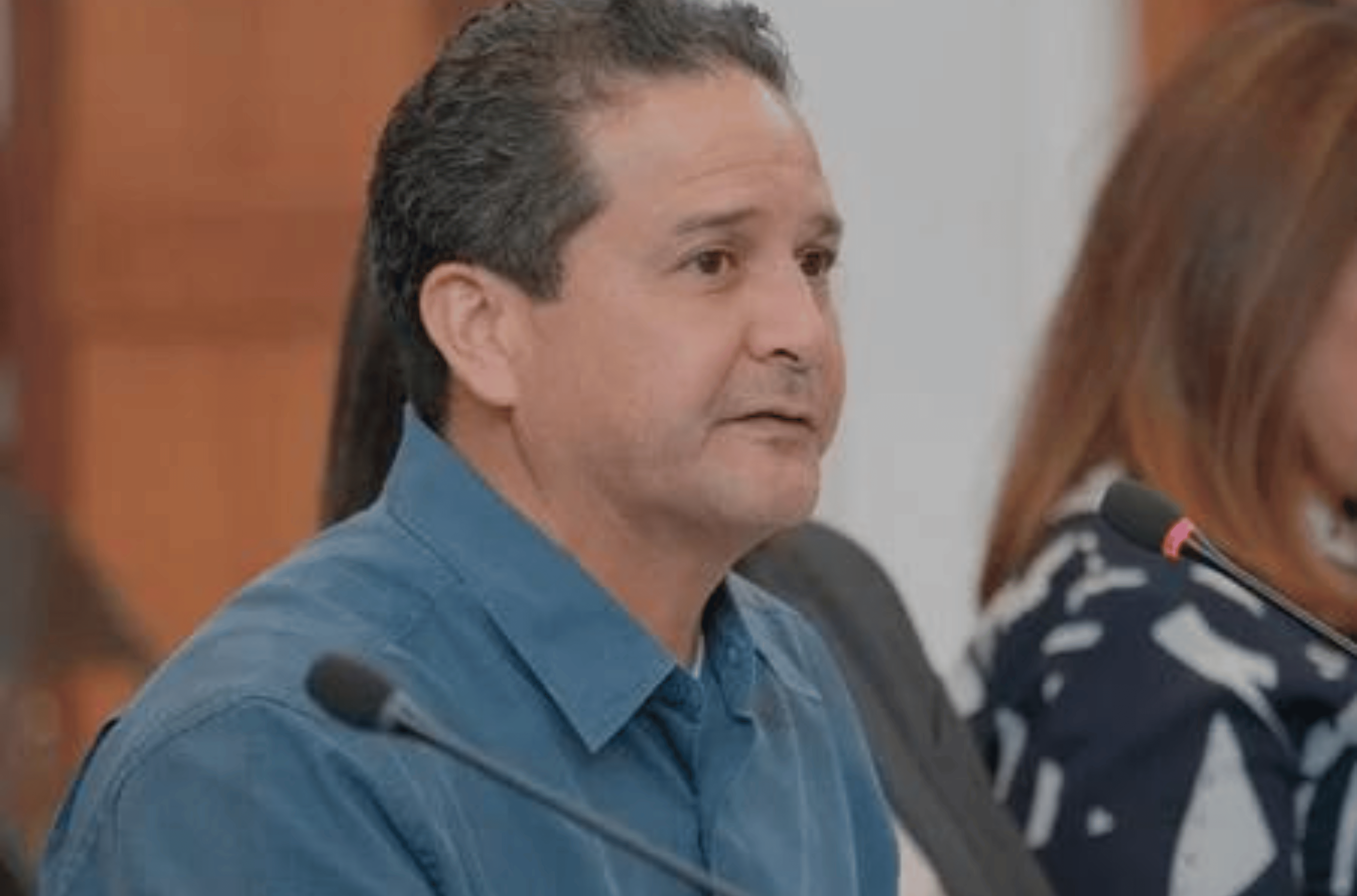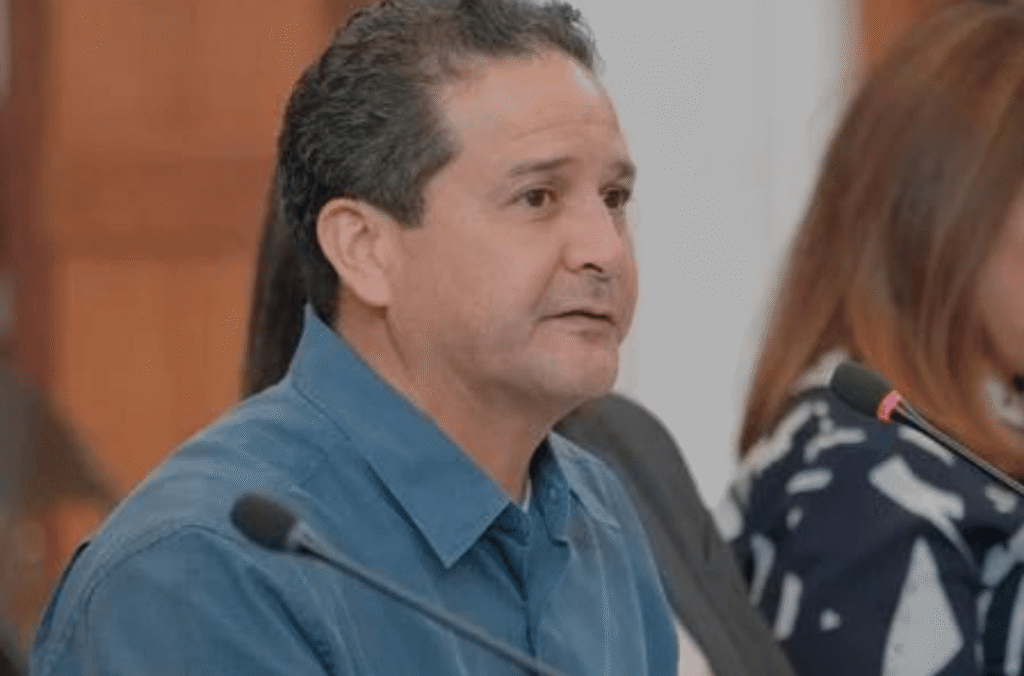HAGÅTÑA (The Guam Daily Post) — The Guam Waterworks Authority has identified about 34 water wells that may require treatment for per- and polyfluoroalkyl substances, known as PFAS, after proposed federal regulations come into effect.
“We have spent the last year expanding our sampling and our database, and we have spent the last several months developing a strategy for how to best and most economically treat the water for these chemicals once the regulations come into effect,” GWA General Manager Miguel Bordallo said Thursday during a legislative oversight hearing on the Northern Guam Lens Aquifer and the status of the island’s water resources.
PFAS are known as “forever chemicals” because their components break down very slowly over a long period of time. These chemicals can be found in many products and the environment, including in drinking water, according to the U.S. Environmental Protection Agency. Exposure to certain levels of PFAS may lead to various adverse health impacts, including increased risk of certain cancers.
The U.S. EPA had been publishing health advisories for certain types of PFAS, which are not regulatory and are unenforceable information.
But last year, the federal agency announced proposed maximum contaminant levels for six types of PFAS. These would be legally enforceable standards and, if finalized, would require drinking water systems to meet the MCLs after an implementation period.
U.S. EPA is proposing individual MCLs of 4.0 nanograms per liter or parts per trillion for two types of PFAS, perfluorooctanesulfonic acid and perfluorooctanoic acid, and to use a hazard index approach to protect the public from mixtures of four other types of PFAS.
Before the end of 2023, the agency submitted its final rule on the MCLs to the U.S. Office of Management and Budget for review.
A few water wells or systems on Guam already have granulated activated carbon, known as GAC, filters to treat PFAS due to their concentration levels compared to current health advisories. These are the NAS-1 well in Tiyan, the Tumon Maui water well and a central treatment system for the A.B. Won Pat International Airport, according to Bordallo. Two other wells with elevated PFAS concentrations, A-23 and A-25 in Hagåtña, were shut down. GWA is working on installing treatment systems at these wells, which is estimated to occur within the next year.
But for the expanded treatment of the island’s water supply, GWA is evaluating treatment alternatives to GAC filters. Approved PFAS removal technologies include activated carbon, ion exchange resin and high-pressure membranes. But these technologies present challenges for rural areas such as Guam, which is far removed from the supply of the filtration media and has to deal with their disposal, according to Bordallo.
Disposal issues
Spent GAC filters, which contain PFAS, now are being containerized and stored with no disposal, according to Bordallo. The general manager said he’s had conversations with the Guam Solid Waste Authority about possibly disposing spent media at the Layon Landfill. GWA biosolid wastes are already disposed of at the landfill, and those wastes have been found to contain PFAS as well.
GSWA officials indicated that they suspect it isn’t just biosolids contributing to PFAS in the leachate, and anticipate that they’ll have to address that issue moving forward, according to Bordallo. GSWA advised the water utility that it can continue to dispose of biosolids and other PFAS-laden media at the landfill, while GWA would seek to help GSWA with its leachate treatment, Bordallo added.
If PFAS treatment alternatives prove applicable to GSWA’s leachate, the agencies will work together to minimize PFAS in the leachate, which ultimately is disposed of in wastewater treatment plants, according to Bordallo.
“We are in the process of bench-scale testing certain technologies that would concentrate the liquid form (of PFAS) instead of generating large volumes of spent media. And we’re trying to establish centralized treatment strategies. So, for these areas where these wells are located, we can put in one treatment system as opposed to 34 points of production treatment systems, which could become quite cost-prohibitive,” Bordallo said Thursday.
“There’s quite a bit of work ahead of us. And we anticipate when the regulations are released there will be a compliance period of two to three years – we don’t know what that is yet until (U.S. EPA) announces it. But we will need that time in order to finalize designs and get construction going for these treatment systems. And all of this does come at a cost,” Bordallo added.
Costs for treatment
GWA has not developed sufficient documentation to estimate costs for its long-term treatment strategy, but the treatment systems designed for the A-series wells in Hagåtña are estimated at $3 million to $4 million, according to Bordallo. These are just capital costs and do not include ongoing operations and maintenance costs, he added.
“If you want to extrapolate that, you could say $2 million per well, and I just mentioned 34 wells. So, we’re looking at between $60 million and $70 million at the low end,” Bordallo said Thursday.
Before speaking on estimates, the general manager noted that if GWA doesn’t receive grant funding, it will have to go to the bond market to fund PFAS-related capital improvement projects.
But, regarding costs, Bordallo said Thursday that GWA is a participant in a class-action lawsuit regarding PFAS. Settlement discussions are ongoing, and GWA can anticipate a portion of the settlement, according to Bordallo.
“I know the total amount that has been proposed for the settlement for one of the defendants is around $13 billion, which will go out to all the class-action members. The deadline for how many members participate and how that amount will be distributed has not yet occurred. So, I don’t have a number for how much we may get, but I do know that we will get some portion of it based on the number of wells that have been impacted,” Bordallo said.
Sen. Telo Taitague pressed GWA officials on who they have been speaking to regarding the litigation, stating that she was concerned over “dropping the ball” on getting settlement funds in light of the potential future treatment costs.
Bordallo said GWA has been speaking on a weekly basis with lawyers for Kelley Drye, the firm hired by the Office of the Attorney General, as they move through the settlement process.
“The nationwide settlement that’s in play is strictly for water providers. And so, the moneys that will be disbursed will go directly to GWA. … The information, all the communication about the settlement, has been with GWA since the end of 2022,” GWA attorney Theresa Rojas added Thursday.
Rojas stated that she has not been communicating with the OAG about the litigation, but she understood Kelley Drye has been communicating with the AG’s office. Taitague expressed concern about that, stating that the two agencies should be speaking to each other about what they’re hearing on the litigation.
“We need funding, and going out on the bond market right now, Mr. Bordallo, is going to be difficult. Because who’s going to fill it is the ratepayers,” Taitague said.












